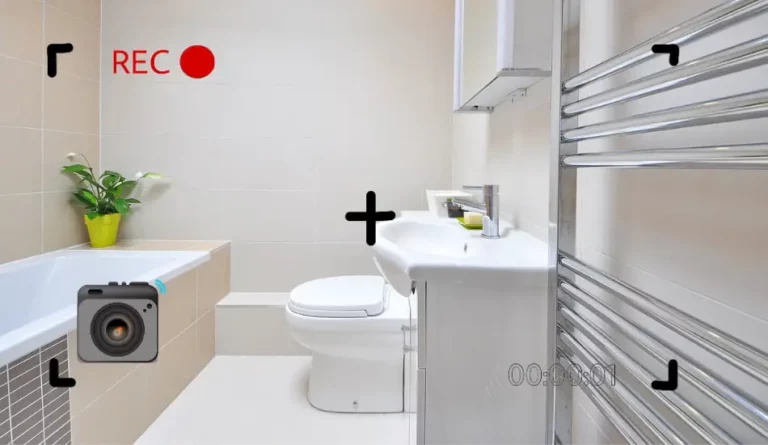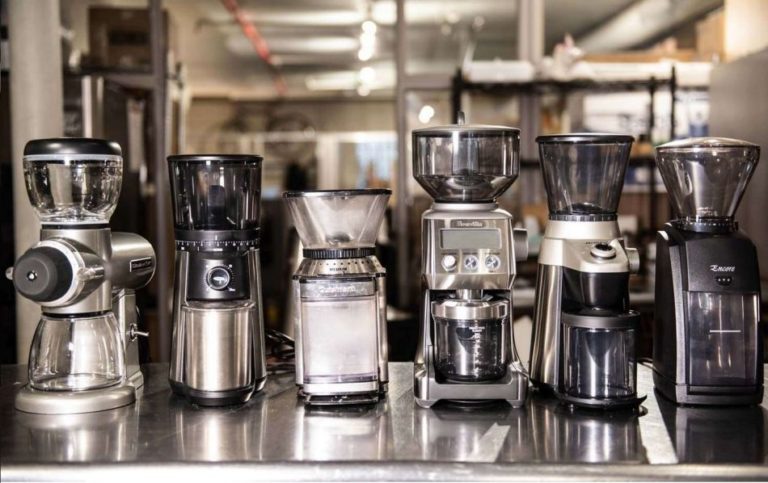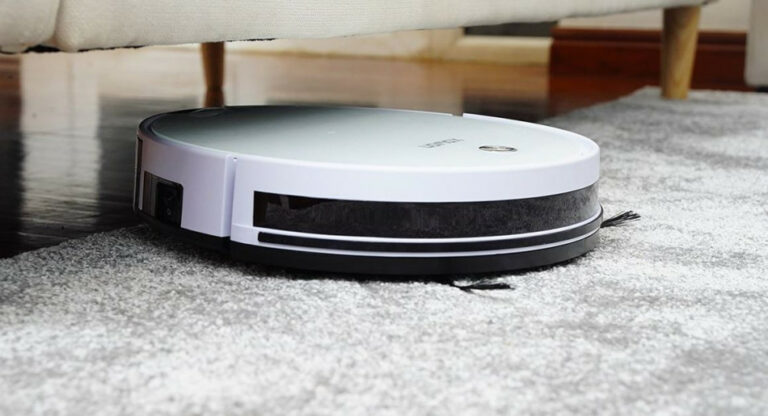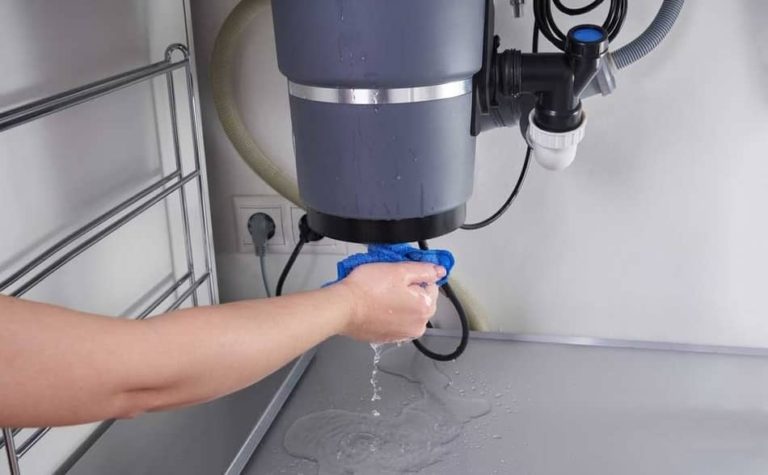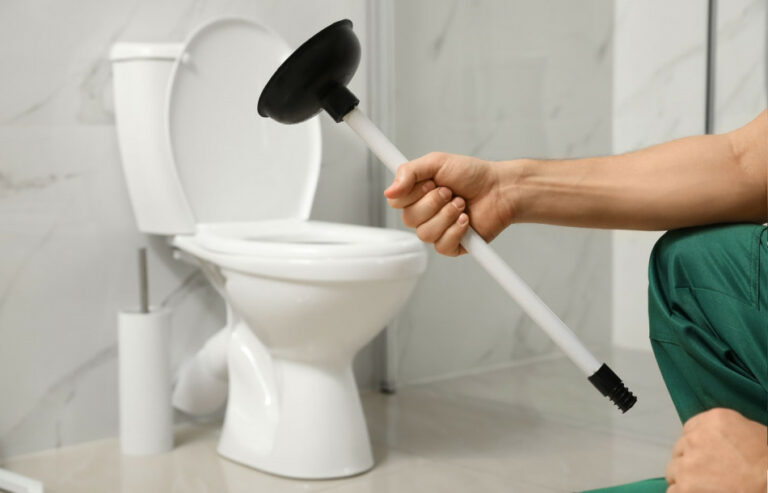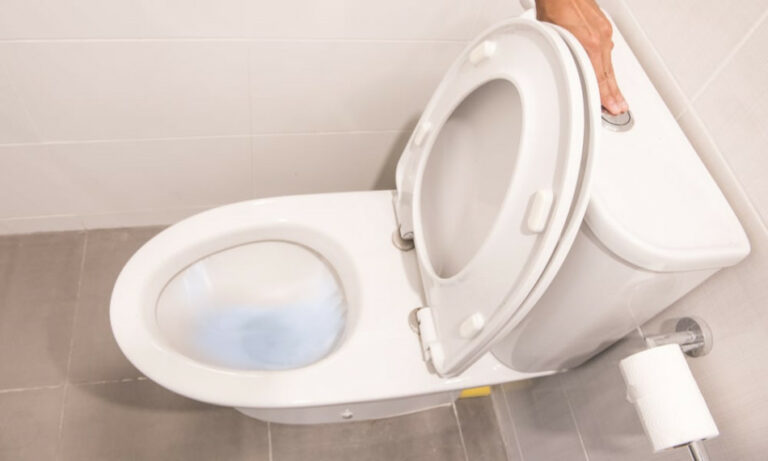Are Moving Blankets Soundproof? (Explained)
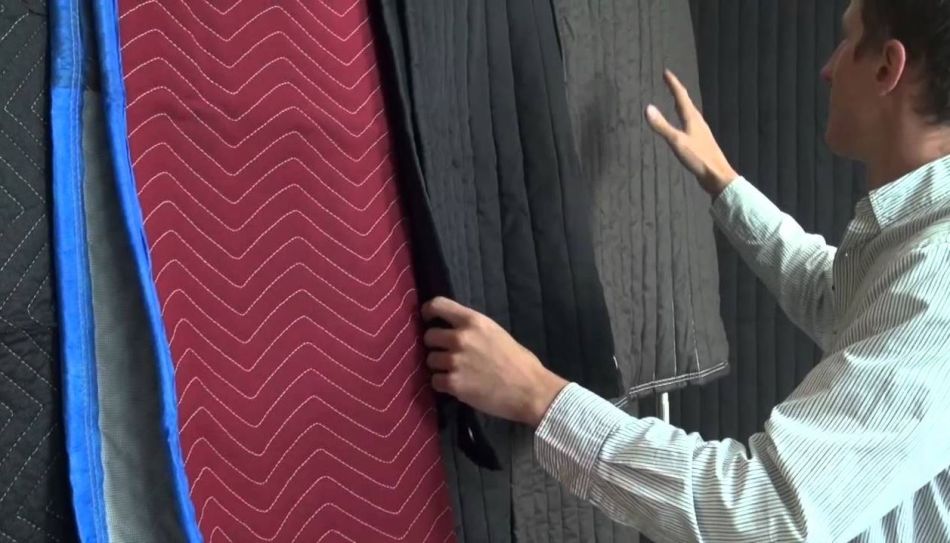
Moving blankets are usually used to transfer boxes, furniture, and other home objects from one place to another. This is done by wrapping around the objects and securing them with duct tape. But can moving blankets be used for soundproofing? In this article, we will talk about that and much more. So, let’s start!
Are Moving Blankets Soundproof? Moving blankets are not completely soundproof, but they do reduce sound. They are more effective in absorbing higher-frequency noises. If you wish to isolate sounds completely, moving blankets won’t do it, but if you just want to lower echo sounds moving blankets will do a decent job.
Moving blankets can be used to reduce sound in a room, but their main purpose is to protect your furniture. Therefore, get a moving blanket if you have a room in the house where you need to reduce the sound. However, they can be used for multiple purposes, so keep that in mind. If you want to learn more about these blankets, be sure to stay with us.
Table of Contents
Can Moving Blankets Work For Soundproofing?
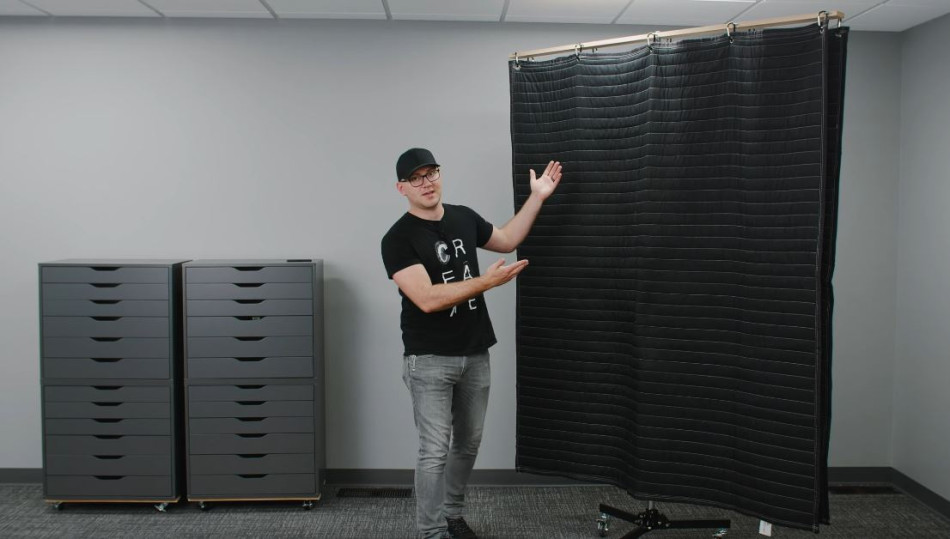
Moving blankets can be used for soundproofing, but their main purpose is to protect the furniture during transport. The material from which these blankets are made is usually polyester and cotton. That makes them solid in absorbing sound. However, they won’t completely isolate sound but will block the echo and cancel high-pitched noises.
Moving blankets can be divided into three types: Heavy moving blankets, Lightweight moving blankets, and Regular moving blankets. We’ll go through each of them in the sections below.
Heavy Moving Blankets
Heavy moving blankets are probably the best for toning down echoes and vibrations but also deadening sound waves because of their high absorption potential. They can be used in recording studios and home theatres as a first-hand option. Also, if you have windows that are not well insulated, they can also be used for that type of insulation.
Lightweight Moving Blankets
Lightweight moving blankets are slightly less effective in sound isolation than heavy moving blankets. Because they are so much thinner, the sound passes through them easier. Also, they are much easier to move around and still work well for some DIY home projects that demand less sound isolation.
Regular Moving Blankets
Regular moving blankets are somewhere in between heavy and lightweight moving blankets in thickness. This also applies to how much sound they can insulate. They are great add-ons to already existing soundproofing projects. For example, you can use them as curtains over your windows to lessen the street noise that comes into your home.
If you have a dog, this article on this topic might interest you: How to Soundproof a Dog Crate?
How To Use Moving Blankets For Sound Dampening?
People who want cheap and fast soundproofing techniques often hope the moving blankets will do the trick. The truth is, no moving blanket will completely eliminate sound, no matter its density. To understand this better, we have listed situations in which using a moving blanket would improve sound quality and make a difference:
1. Moving Blanket As a Curtain
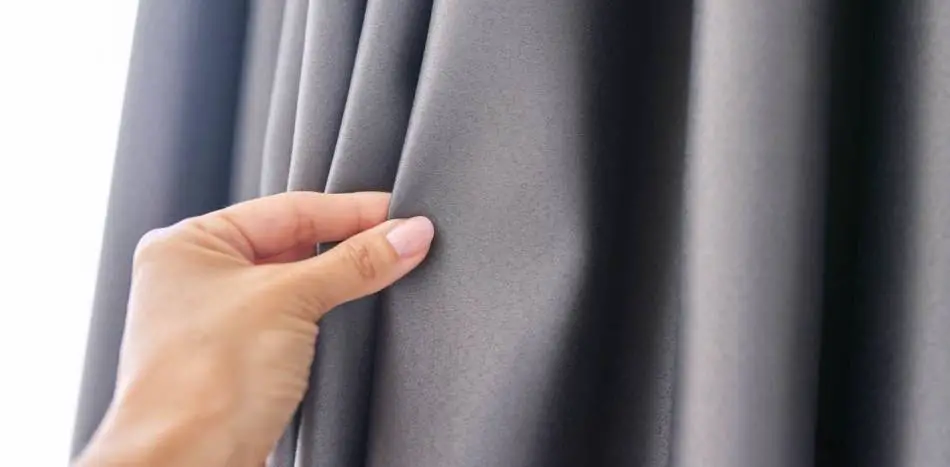
If you have a window facing the street, it can be very noisy. This especially applies to rooms that are quite sensitive to loud sounds. For example, the baby’s room, a home recording studio, a meditation room, or even the bedroom. In those, you can try using moving blankets as window curtains.
Using a moving blanket as a curtain will help in sound dampening. It is important to point out that moving blankets may spoil the aesthetics of your windows. If you want moving blankets to look aesthetically cohesive with the space, try sewing them onto the back of the curtains. That way, you get the sound absorption from the moving blankets but the look from the curtains.
2. Home Appliances
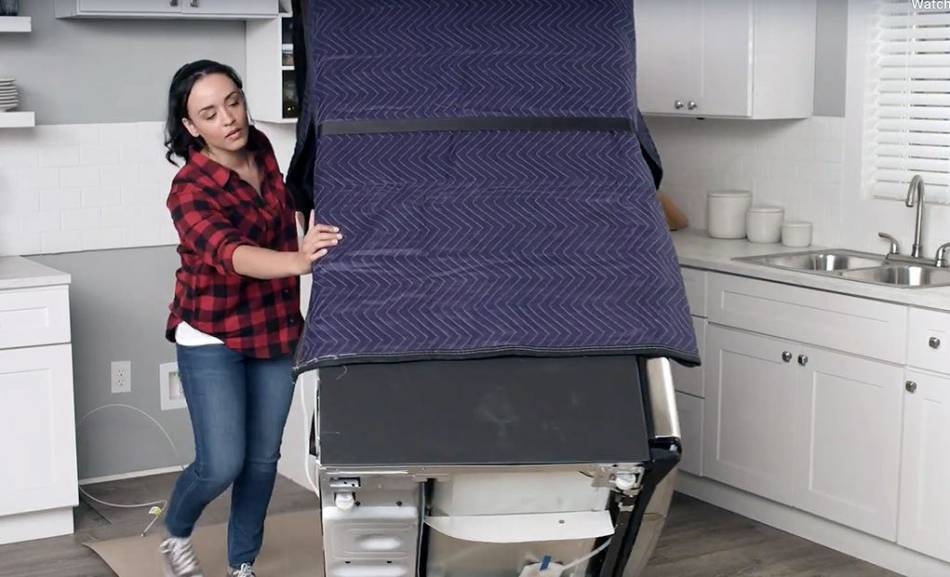
Some home appliances can get really loud during operation. Moving blankets are great covers for those appliances. However, it’s important to note that you cannot cover just any appliance because it could create a fire hazard.
For example, it’s not a good idea to cover a toaster, a water cooker, or a heater. Those appliances shouldn’t be covered with moving blankets or any other covers, for that matter. On the other hand, dishwashers, washing machines, and refrigerators can be covered safely.
3. Moving Blanket As a Door Covers
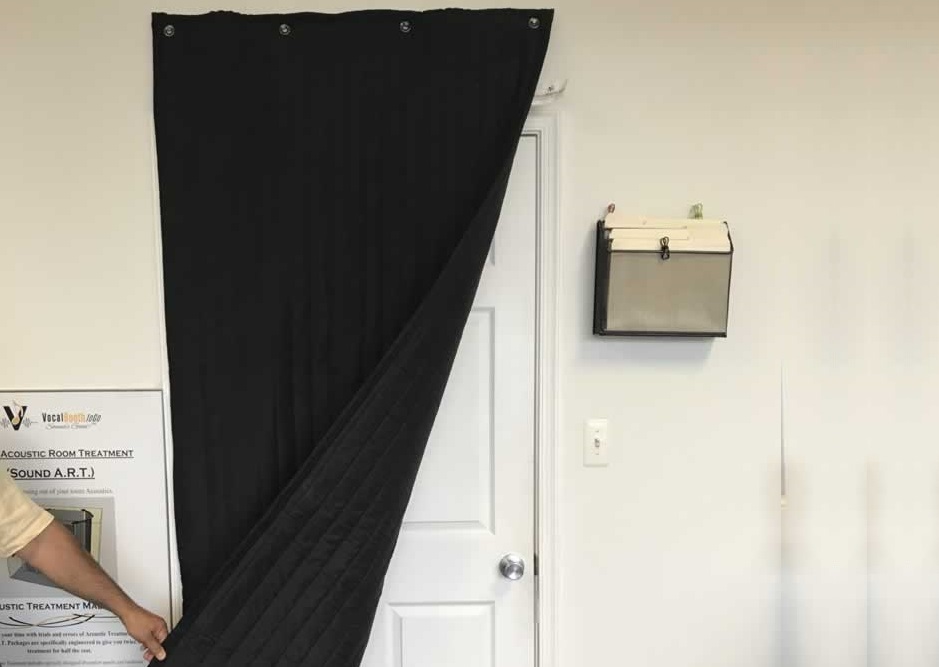
Other than on windows, moving blankets could be used to cover doors. They are most often placed over the main entrance door but can be placed on any other door in the house. This can come in handy, especially for people with low budgets and those in a rented apartment, so they aren’t allowed to make big changes, like installing a new, thicker door.
Related Article: 5 Quietest Robot Vacuum Cleaners (Reviews)
4. Moving Blanket To Cover A Noisy Floor
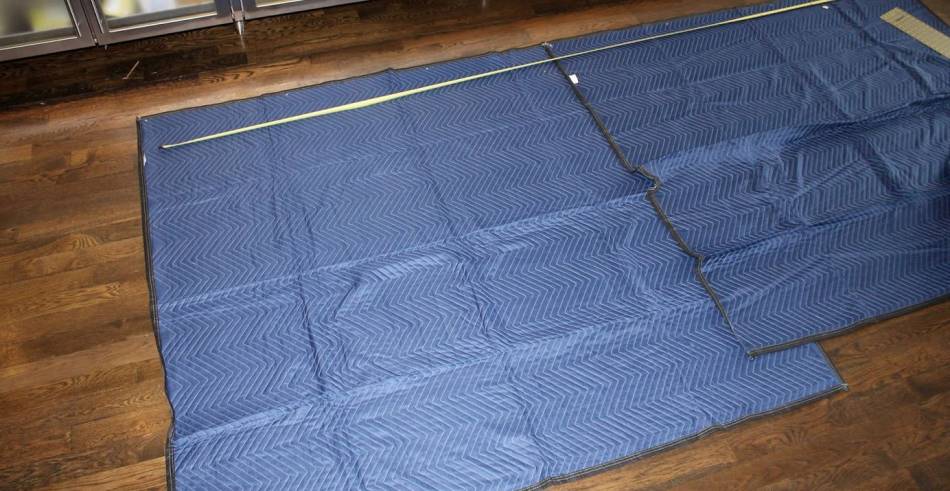
Wooden floors can get extremely noisy. If you don’t believe us, check with your downstairs neighbors and ask them. Because the wooden plates are aligned next to one another, they can make squeaking and cracking sounds in certain places. You can place moving blankets on top of those impact spots for a temporary solution to act as a sound barrier. For a more long-term solution, we suggest installing a thicker fuzzy carpet.
Is It Possible To Reduce Sound By Using Moving Blankets?
Complete acoustic isolation is impossible, even when dealing with much more advanced materials that are made for sound insulation. Therefore, moving blankets made from fabric can’t isolate the sound that is coming through them, but they can reduce the sound. You could then wonder how moving blankets can help with sound absorption? Well, there are two reasons:
- Dense weaving. The material used to make moving blankets is usually polyester or cotton with dense weaving. That lessens the number of holes in the material almost completely.
- Thick material. The material is thick and heavy. It can weigh up to 3 pounds per blanket. The thickness helps with the absorption of sound waves.
Here you can see the testing of moving blankets for acoustic treatment:
Where Can You Get Moving Blankets?
Moving blankets can be bought in shops like Home Depot, Walmart, U-haul, or even online on Amazon. Although you may not find them in every house, they are very easy to obtain. Now that you’ve read how they come in different types and densities, you should easily pick the ones you need.
If you have a problem with loud sound in your room, be sure to read 10 Best Soundproof Room Dividers.
Other Cheap Soundproofing Materials Like Moving Blankets
Moving blankets are the cheapest and best option if you want to soundproof a room. If you want to add another soundproofing element to the moving blankets or, in general, want to try something else, here are a few options to consider:
- Acoustic curtains: These curtains are made specially to help with noise cancellation. They are often used to make the theater curtain or in homes to quiet down the racket. They look nice and do a good job.
- Caulk: Caulk can be used to block the sound that is coming from holes around your windows or doors. The holes let sound in, so the noise can be significantly reduced by closing them with an insulator such as caulk.
- Green glue: This is a noise-proofing glue that is also eco-friendly. It is used during construction or renovation for better soundproofing of floors, walls, and ceilings. It can be used on different materials such as: cement board, plywood, orient strand board (OSB), medium-density fiberboard (MDF), or drywall. Green glue is placed in between two parts of the building material.
FAQ: People Also Ask
Can I soundproof a room with blankets?
Rooms cannot be completely soundproofed by using only blankets. The sound can only be reduced slightly by toning down echoes and high-pitched noises. This can be done by placing blankets on windows and on doors.
Are moving blankets the same as sound blankets?
Moving blankets are similar to, but not the same as, sound blankets. A sound blanket’s main purpose is to isolate sound, while a moving blanket’s main purpose is to wrap furniture to avoid damage during transport. The moving blankets can also absorb sound, but that isn’t their main role.
Final Thoughts
Moving blankets serve more purposes than one. Other than protecting furniture in transport, they can also reduce sound. That’s why in-home projects, they are used as sound insulators in many ways: on squeaky floors, windows, doors, or even ceilings.
Depending on their thickness, the sound isolation capability varies. However, moving blankets are not used for professional use, but they are usually part of a DIY sound insulation project. We hope this article gave you an idea of what to do with a moving blanket. If you have any questions, feel free to reach out!


